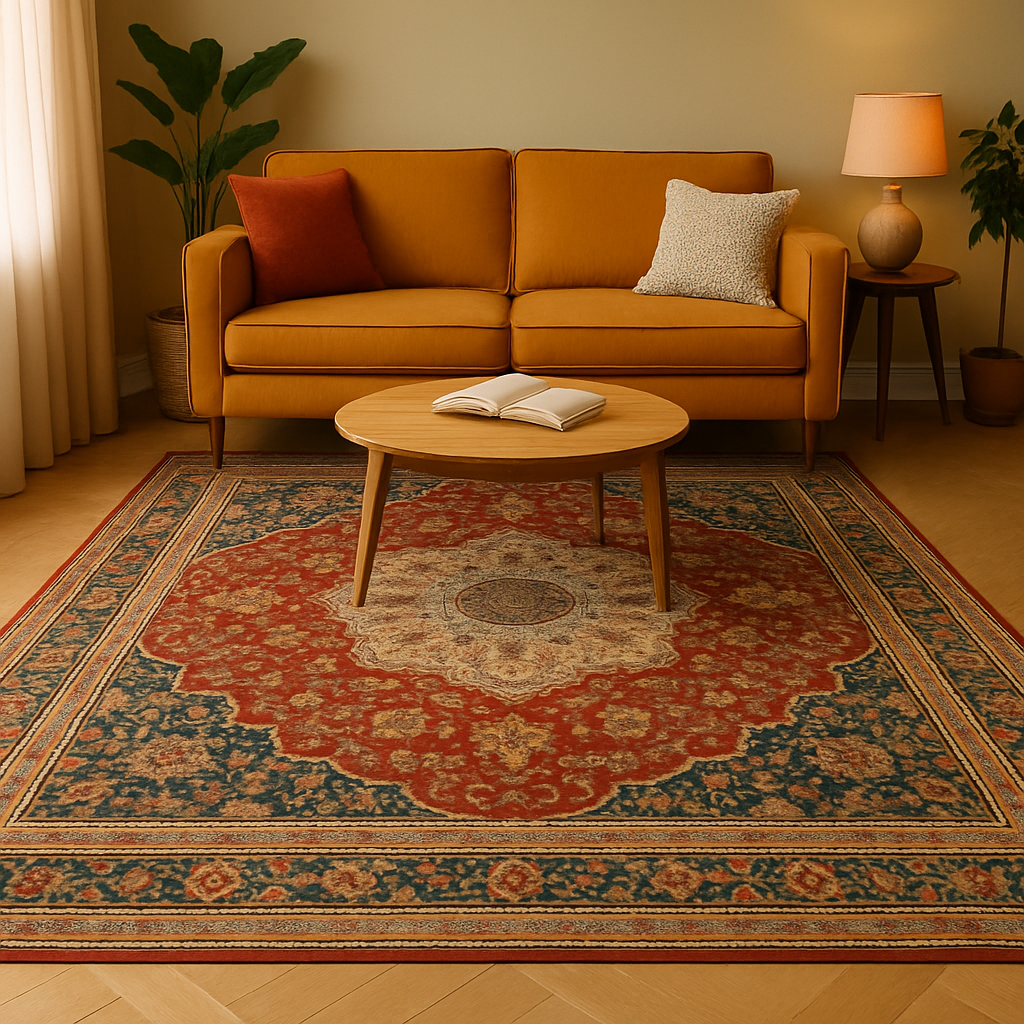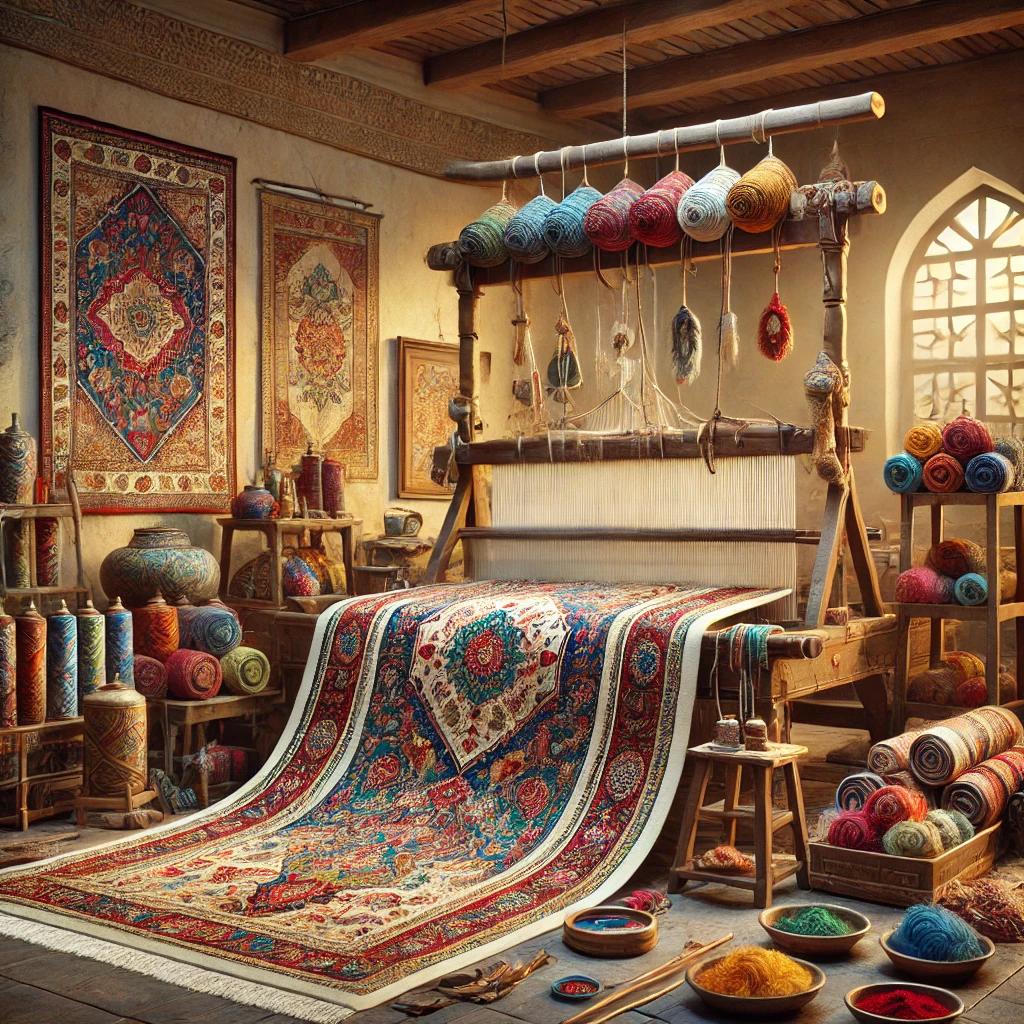The right rug can tie a room together—but did you know that how you position your rug can dramatically impact the overall feel of the space? Whether you’re decorating a narrow hallway or a spacious living room, rug orientation—especially how patterns align with room shape—is key to visual harmony, flow, and function.
At Persian Rug Gallery, we guide clients through this often-overlooked detail, ensuring their investment enhances—not disrupts—the room’s design.
Why Rug Orientation Matters
Rug orientation refers to the direction a rug is laid and how its pattern or shape interacts with the room’s geometry. Proper orientation can:
- Create the illusion of space
- Direct foot traffic
- Enhance focal points
- Improve symmetry and balance
Rugs with detailed borders, central medallions, or linear motifs require intentional placement for full visual impact.
Horizontal vs. Vertical Placement: A Quick Breakdown
🛋️ Living Rooms:
Orient rectangular rugs to follow the longer side of the room. A centered medallion should face the main seating area, not be tucked under furniture entirely.
🛏️ Bedrooms:
Place the rug horizontally under the bed with equal portions visible on either side. For smaller rugs, try runners along each side.
🍽️ Dining Rooms:
Align the rug with the shape of the table. Rectangular tables need rectangular rugs oriented lengthwise; round tables pair best with round rugs.
🏛️ Hallways and Entryways:
Use runners aligned with the corridor length. Place any directional motifs (like arrows or floral vines) pointing into the space.
Pattern Orientation Tips
🎯 Medallion-Centered Rugs:
Make sure the central medallion sits symmetrically in the space it’s meant to highlight—often a coffee table, dining area, or chandelier.
🔄 Repeating Geometric Patterns:
These work well in modern spaces and can be rotated depending on what direction you want the room to “flow.”
🌿 Directional Floral or Vine Designs:
Align them with foot traffic or architectural lines (like windows and doors) for coherence.
Room Shape Alignment Guidelines
- Rectangular Rooms: Align the rug’s longer side with the longer wall. This stretches the space visually.
- Square Rooms: You have flexibility. Match seating arrangement symmetry with rug design.
- Irregular Spaces: Use rugs to define zones, but keep pattern alignment consistent to maintain flow.
When to Break the Rules
Creative designers sometimes rotate rugs diagonally to add drama, especially with square rooms or under accent furniture. Use this technique sparingly—it can either elevate or overwhelm a space.
Final Thoughts
Mastering rug orientation isn’t just about placement—it’s about intention. Whether you’re showcasing a Persian medallion or accentuating minimal modern lines, aligning rug patterns with your room shape ensures your rug doesn’t just sit in a room—it belongs.
Meta Description:
Learn how to align rug patterns with room shape for better balance and flow. Master rug orientation to transform your living spaces with expert precision.
Explore More
- External Link: Architectural Digest – How to Choose the Right Size Rug for Every Room
- Internal Link: How to Make a Rug the Star of the Room
📍 Persian Rug Gallery
51 Springboro Pike, Miamisburg, OH 45342
📧 buyprg@yahoo.com
📞 (937) 436-3655
🌐 Visit Our Website



